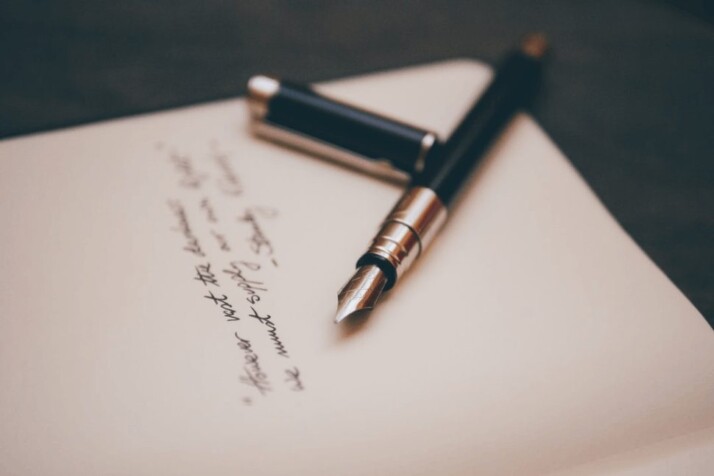A formal letter is written in an orderly and conventional language and follows a stipulated format. The formal letter format relies on careful construction and thorough writing to achieve the desired effect.
These letters are for official purposes only, such as writing to a manager, an employer or the Principal of a school.
This guide to formal letter writing will help you craft compelling and proper formal letters.
What is a Formal Letter?
A formal letter is a written communication, typically signed and addressed to a specific individual or entity in a business context. It is subject to a specific style and follows professional and formal conventions.
A formal letter takes a form manner that is appropriate and respectful. It often uses honorific language or a ceremonious tone. This letter can address a stranger who doesn’t know all the particulars of the recipient’s life and needs.
The purpose of a formal letter is straightforward: to inform a person or company about something specific but generally in a respectful manner. A formal letter is different from an informal letter in that it follows specific rules and is a standard letter format.
When to Write a Formal Letter
A formal letter should be written when a person must present or deliver some information to someone else in a professional or official setting. A formal letter is typical when addressing someone unfamiliar with you.
Formal letters are written for a variety of reasons, such as:
- Request for financial aid
- Application for a job
- Letter of inquiry
- Resignation letter
- Appointment letter
- Business letter
- Letter of complaint
Formal Letter Format
A formal letter typically follows a standard format. When writing a formal letter, it is essential to follow the rules and be as straightforward as possible. The recipient would be untrusting of a person they’re unfamiliar with, so it is best to state your point clearly in the first paragraphs.
A formal letter comprises two addresses, a date, an opening greeting, a body, and a closing. A formal letter often closes with a signature block. The following must be included in a formal letter.
1. Sender’s Address
The sender’s address should be written at the top right-hand corner of the paper. Provide a complete and accurate address. This will establish credibility with the recipient and give them an address with which they can write back or keep in touch.
2. Date
The date gives your letter an authentic and credible look. It will help the recipient check the validity of the letter. Writing the complete and accurate date is necessary for record-keeping purposes.
3. Recipient’s Address
The recipient’s complete and accurate address might be their place of residence or business. It should be written on the left side of the page. Ensure that you write the receiver’s name and position/official title before the address.
4. Salutation/Greeting
Your greeting should be as formal and professional as possible, as it often sets the tone for the rest of the letter. It can be fancy, brief, or even cordial, but it must be respectful and appropriate for the occasion. You can use general greetings like “Dear Sir” or “Dear Madam,” or use Mr and Mrs with the recipient’s full name.
5. Subject
The subject comes just below the salutation of the letter. It tells the purpose of the letter in one line. This will give the receiver an overall idea of what the letter is about even before they read it.
6. Body of the Letter
In the first paragraph, mention the reason for writing the letter and thank the recipient for their time. You should be brief, courteous, and firm. Also, remember to maintain a formal tone and style throughout the letter.
The body is the main content of the letter. Each body paragraph must be carefully developed. Don’t forget to be straightforward and precise, so the recipient doesn’t lose interest.
7. Closing the Letter
Express gratitude before you close your letter. A complimentary closing should follow. Phrases like “Yours faithfully” and “Yours sincerely” are the most appropriate to use in a formal letter. They should be written on the right side of the paper.
8. Signature
You must end a formal letter with a sign-off. Write your signature beneath the complimentary close. Your name should come just below your signature. It is imperative not to skip this, as it gives the writer an idea of who is writing them.

To Wrap Up
A formal letter is an official document written for professional or official purposes. It contains the necessary components for follow-up, and it is to be evident that the letter is not a casual writing.
If your intended audience is not a business or individual in a professional/official setting, then never write a formal letter. However, if you are writing a formal letter, be mindful of its need for formalities.
Explore All Formal Letter Articles
Four Steps of a Formal Legal Letter Format
Figuring out the perfect formal legal letter format can be challenging. What Is a Formal Legal Letter? Legal Letters are…
Guide to Formal Visa Invitation Letter Writing
An invitation letter is used to invite someone from your own country to visit and stay in your home for…
A Basic Guide on Formal Dispute Letter
Writing a letter to respond to a dispute is a common and appropriate way to handle any disagreements with a…
What is a Letter of Agreement and How It Protects You
You must learn how to write a formal agreement letter if you engage in business. It is a type of…
Stand Out With a Formal Thank-you Letter for Interview
There are many reasons why sending a formal thank you letter for interview is important. What Should Be Included in…
Writing a Formal Donation Thank You Letter That Wows
The end of the year is a great time to remember, reflect, and say thank you. But do you know…
